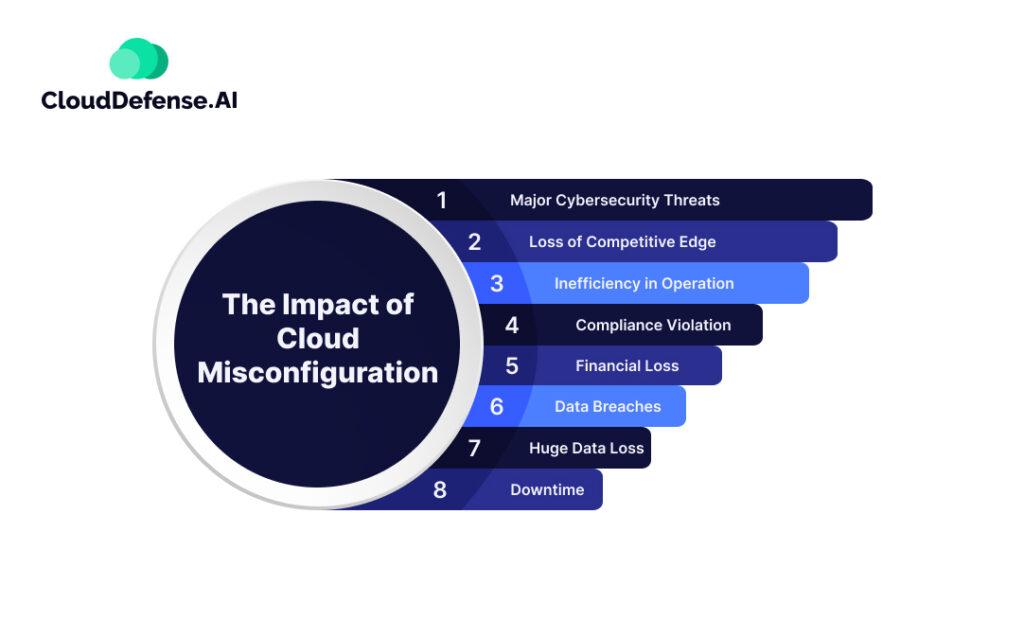In today’s digital landscape, where the clouds are as much a part of our infrastructure as the ground beneath our feet, the notion of security has taken on a whole new meaning. We often hear about data breaches caused by malicious hackers, but what if we told you that the biggest threat to your sensitive information might stem from something far less sinister? Enter misconfigurations—those sneaky little oversights that can leave your data wide open to the world. As businesses increasingly shift to cloud-based solutions, understanding and managing these vulnerabilities is paramount. That’s where Cloud Posture Management comes into play, acting as your vigilant guardian in the cloud. In this article, we’ll explore why misconfigurations have emerged as the new data breach and how effective Cloud Posture Management can safeguard your organization against these hidden pitfalls. So, grab a cup of coffee, settle in, and let’s dive into the crucial steps you can take to secure your cloud environment!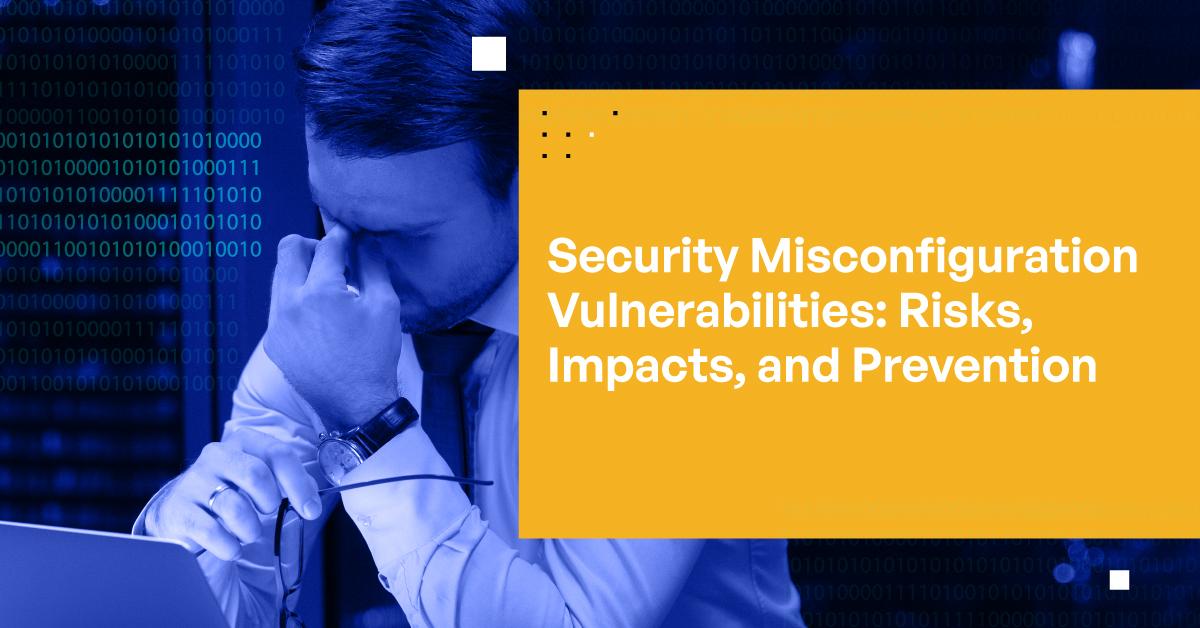
Understanding Misconfigurations and Their Impact on Data Security
In the ever-evolving landscape of data security, misconfigurations have emerged as a silent but dangerous threat. These oversights can occur during the deployment of cloud services, where complex settings and permissions might be left unchecked. When organizations fail to properly configure their cloud environments, they inadvertently expose sensitive data to unauthorized access, leading to potential breaches that can have devastating consequences.
Misconfigurations are often the result of human error or a lack of understanding of the technology. Here are some common types of misconfigurations that can jeopardize data security:
- Exposed Storage Buckets: Publicly accessible cloud storage can allow anyone to access sensitive files.
- Improper Permissions: Users might have more access than necessary, increasing the risk of data leaks.
- Default Credentials: Failing to change default passwords can lead to easy exploitation by attackers.
- Inadequate Logging: Without proper logging, it’s challenging to detect and respond to security incidents.
The impact of these misconfigurations can be far-reaching. A data breach can lead to financial losses, legal repercussions, and damage to an organization’s reputation. In fact, according to a recent study, misconfigurations accounted for over 80% of cloud-related incidents, highlighting the urgency for organizations to prioritize proper configuration practices. But the good news is that this is preventable.
Cloud posture management tools play a critical role in identifying and rectifying these vulnerabilities. These solutions offer continuous monitoring, automated alerts, and actionable insights to ensure that your cloud environment remains secure. For instance, they can:
- Audit Configurations: Regularly check for compliance with best practices.
- Provide Visibility: Offer dashboards that highlight potential misconfigurations.
- Implement Policies: Enforce security policies across cloud resources automatically.
By adopting a proactive approach to cloud security through posture management, organizations can effectively mitigate the risks associated with misconfigurations. Embracing these tools not only enhances data security but also fosters a culture of responsibility towards cloud resource management. Remember, the cost of prevention is always less than the cost of a breach—don’t let misconfigurations be the weak link in your security strategy.
The Rising Threat of Misconfigurations in the Cloud Era
As organizations increasingly migrate to the cloud, the complexity of managing configurations has skyrocketed. What was once a manageable task in an on-premises environment has evolved into a labyrinth of settings, permissions, and integrations. In this cloud-centric landscape, misconfigurations have emerged as a leading cause of data breaches, often overshadowed by more traditional security threats. Understanding and addressing these vulnerabilities is critical for safeguarding sensitive information.
One of the most alarming aspects of misconfigurations is their prevalence. According to recent studies, over 70% of cloud security failures can be traced back to configuration errors. These mistakes can occur in various areas, including:
- Improper access control settings, which could allow unauthorized users to access sensitive data.
- Unsecured storage buckets, exposing critical information to the public internet.
- Mismanaged identities that fail to enforce strict authentication protocols.
While the risks are significant, organizations can implement effective solutions to mitigate these threats. Cloud Posture Management (CPM) tools play a pivotal role in enhancing security by providing continuous monitoring and assessment of cloud configurations. These tools help identify vulnerabilities, ensuring that all settings align with best practices. Key features of CPM solutions include:
- Automated compliance checks to ensure adherence to industry regulations.
- Real-time alerts for any deviations from established configurations.
- Detailed reporting that aids in understanding risk exposure and compliance status.
| Misconfiguration Type | Potential Risk | CPM Solution |
|---|---|---|
| Open S3 Buckets | Data Exposure | Automated Scans |
| Weak IAM Policies | Unauthorized Access | Access Control Audits |
| Publicly Accessible Databases | Data Breach | Real-Time Monitoring |
By leveraging Cloud Posture Management tools, organizations not only enhance their cloud security posture but also foster a culture of continuous improvement. Regular audits and assessments can turn the tide against misconfigurations and help businesses stay one step ahead of potential threats. With the right strategies and tools in place, organizations can focus on innovation and growth while minimizing the risks associated with cloud misconfigurations.

Why Cloud Posture Management is Your Best Defense Against Data Breaches
In an era where data breaches are alarmingly frequent, the security of your cloud environment has never been more critical. Misconfigurations account for a significant portion of security incidents, making it essential to adopt robust Cloud Posture Management (CPM) practices. By actively monitoring and managing your cloud resources, you can identify vulnerabilities before they are exploited, effectively fortifying your defenses against potential breaches.
Here’s why CPM is indispensable for your cloud security strategy:
- Continuous Monitoring: CPM tools provide real-time insights into your cloud configurations, ensuring any deviation from best practices is flagged immediately.
- Automated Compliance: With compliance regulations evolving, CPM helps automate checks to ensure adherence to standards like GDPR, HIPAA, and PCI-DSS.
- Risk Assessment: These tools analyze your cloud environment for potential risks, enabling you to prioritize remediation efforts effectively.
- Collaboration Across Teams: By offering a centralized view of cloud posture, CPM fosters better communication between security, DevOps, and IT teams.
Consider the impact of a misconfiguration. According to a recent study, over 70% of organizations experienced at least one security incident due to misconfigured cloud settings. This statistic highlights the pressing need for proactive measures. CPM not only identifies these misconfigurations but also provides actionable insights to resolve them swiftly.
Furthermore, implementing CPM can lead to substantial cost savings. A single data breach can cost a company millions in recovery and reputation damage. By investing in Cloud Posture Management, you not only mitigate these risks but also enhance your operational efficiency. Imagine a workplace where your teams can focus on innovation rather than constantly firefighting security issues!
as the threat landscape continues to evolve, so must your defenses. Adopting a comprehensive Cloud Posture Management strategy empowers your organization to stay one step ahead of data breaches. With the right tools and practices in place, you can turn your cloud environment from a potential vulnerability into a bastion of security.
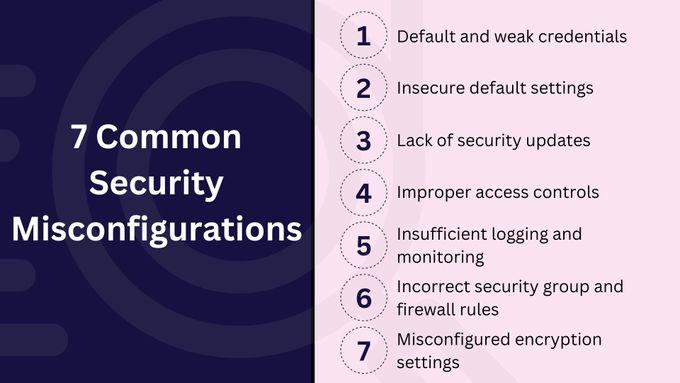
Key Misconfigurations to Watch For and How They Can Lead to Data Loss
In the rapidly evolving landscape of cloud computing, misconfigurations are becoming a significant threat to data security. Organizations often overlook the details, leading to vulnerabilities that can be exploited by malicious actors. Understanding common misconfigurations is crucial for preventing potential data loss and ensuring a robust security posture.
Here are some key misconfigurations that businesses frequently encounter:
- Exposed Storage Buckets: Publicly accessible cloud storage can lead to sensitive data leaks, allowing unauthorized users to access critical information.
- Inadequate Access Controls: Failing to properly configure user permissions can result in excessive access rights, making it easier for insiders or external threats to compromise sensitive data.
- Default Settings Left Unchanged: Many cloud services come with pre-set configurations. Not customizing these settings may leave organizations vulnerable to attacks that exploit known weaknesses.
- Unpatched Software: Neglecting to regularly update cloud software can expose organizations to vulnerabilities that attackers are eager to exploit.
- Misconfigured Firewalls: Firewalls that are not properly set up can allow unwanted traffic through, increasing the risk of data breaches.
These misconfigurations can lead to dire consequences. For instance, an exposed storage bucket can result in massive data breaches, impacting customer trust and leading to costly regulatory fines. Similarly, inadequate access controls not only jeopardize data integrity but can also complicate compliance with standards such as GDPR or HIPAA.
To illustrate the impact of these misconfigurations, consider the following table:
| Misconfiguration Type | Potential Consequence | Preventive Measure |
|---|---|---|
| Exposed Storage Buckets | Data Breach | Implement strict access controls |
| Default Settings | Increased Vulnerability | Regularly review and customize settings |
| Unpatched Software | Exploit Risks | Automate updates and patch management |
By taking a proactive approach to cloud posture management, organizations can identify these misconfigurations before they lead to devastating data loss. Conducting regular audits and utilizing automated tools can help in spotting vulnerabilities and ensuring compliance with best practices. The goal is to stay one step ahead of potential threats, securing not just data but also the organization’s reputation and future.
How to Conduct a Cloud Security Posture Assessment Effectively
Conducting a cloud security posture assessment effectively is crucial in today’s digital landscape, where misconfigurations can lead to devastating data breaches. Start by establishing a clear understanding of your cloud environment. Identify key assets and sensitive data that require protection, as well as the various cloud services you utilize. This foundational step will help you determine the scope of your assessment.
Next, leverage automated tools to scan your cloud infrastructure for vulnerabilities and misconfigurations. These tools can help identify areas where security controls might be lacking or improperly configured. Be sure to focus on:
- Identity and Access Management: Ensure that permissions are properly assigned and follow the principle of least privilege.
- Network Security: Assess firewall settings, security groups, and other network configurations.
- Data Protection: Review encryption settings and data classification procedures.
Once you’ve gathered data on your cloud environment, it’s time to analyze it. Prioritize findings based on potential risk and impact to your organization. Create a clear action plan that includes remediation steps for high-risk issues. Consider utilizing a table to summarize your findings and prioritize remediation:
| Vulnerability | Risk Level | Recommended Action |
|---|---|---|
| Excessive Permissions | High | Review and adjust IAM policies |
| Unencrypted Data at Rest | Medium | Implement encryption protocols |
| Open Security Groups | Low | Restrict access to known IPs |
Once you’ve implemented recommended actions, continuous monitoring is key. Regularly review your cloud security posture to ensure it remains robust against evolving threats. Make it a habit to schedule periodic assessments, conduct training sessions for your team, and stay updated on the latest cloud security best practices. Remember, a proactive approach is your best defense against misconfigurations that could lead to serious data breaches. Cultivating a culture of security awareness within your organization can significantly enhance your cloud security posture.
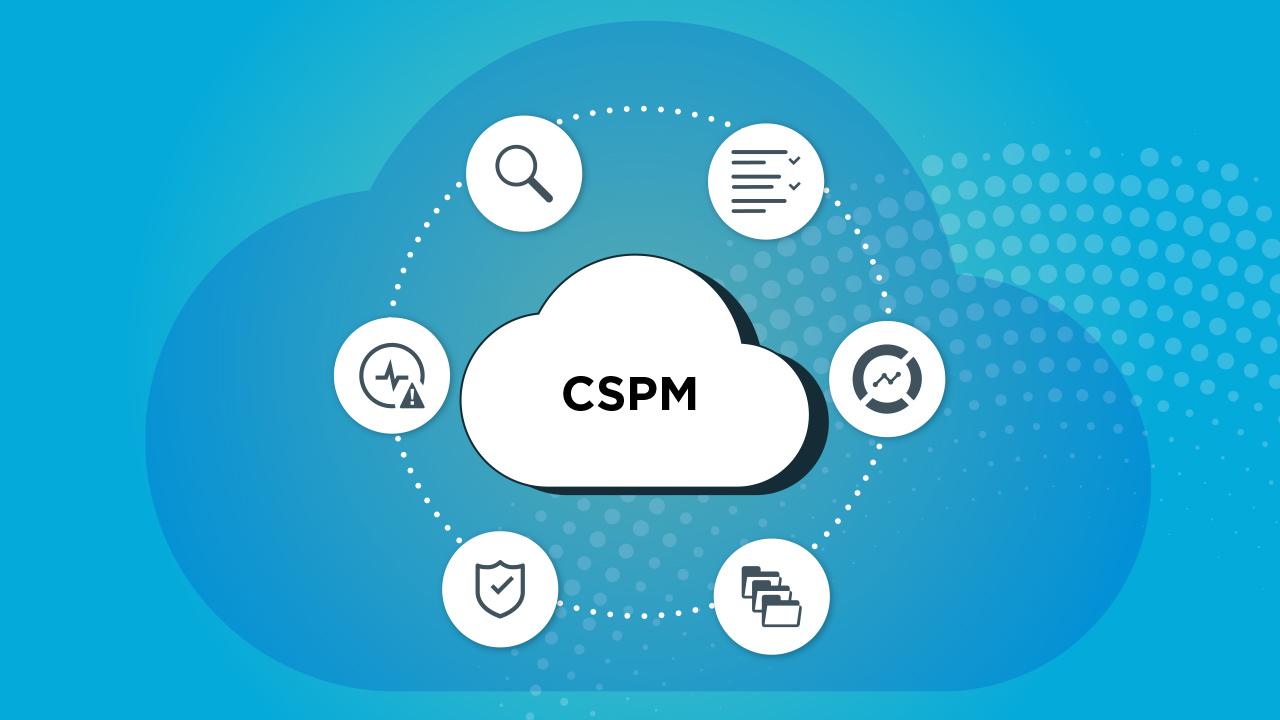
Best Practices for Implementing Cloud Posture Management Solutions
When it comes to Cloud Posture Management, adopting the right practices is crucial for maintaining a secure and resilient cloud infrastructure. Organizations can significantly reduce the risk of misconfigurations and data breaches by following a strategic approach. Here are some essential best practices to consider:
- Regular Assessments: Conduct routine assessments of your cloud environment to identify and rectify configuration issues proactively. Use automated tools to scan for vulnerabilities and compliance gaps.
- Establish Policies: Develop clear security policies that outline acceptable configurations, access controls, and incident response protocols. Ensure these policies are communicated and understood across the organization.
- Continuous Monitoring: Implement continuous monitoring solutions to track changes in your cloud environment. This allows for real-time detection of misconfigurations and potential security threats.
- Training and Awareness: Provide training for your team on cloud security best practices. This empowers them to recognize and correct potential misconfigurations before they lead to breaches.
- Leverage Automation: Utilize automation tools to enforce security policies consistently. Automation minimizes human error, a leading cause of misconfigurations, and helps maintain compliance.
Another key aspect of effective Cloud Posture Management is the integration of governance frameworks that align with your organization’s compliance requirements. By doing so, you ensure that your cloud configurations not only meet security standards but also adhere to industry regulations.
| Best Practice | Description |
|---|---|
| Regular Assessments | Frequent evaluation of cloud configurations to spot and fix vulnerabilities. |
| Establish Policies | Clear guidelines for acceptable configurations and security protocols. |
| Continuous Monitoring | Real-time tracking of changes to identify misconfigurations. |
| Training and Awareness | Educating staff on cloud security to minimize errors. |
| Leverage Automation | Using tools to enforce security policies and reduce human error. |
By implementing these best practices, organizations can establish a robust framework for Cloud Posture Management that not only protects against misconfigurations but also fosters a culture of security awareness. Remember, a proactive approach to cloud security is not just a best practice—it’s a necessity in today’s rapidly evolving digital landscape.
The Role of Automation in Preventing Cloud Misconfigurations
In the ever-evolving landscape of cloud computing, the potential for misconfigurations to lead to catastrophic data breaches has become alarmingly evident. As organizations increasingly migrate to the cloud, the complexity of services and configurations can create vulnerabilities that are often overlooked. This is where automation steps in as a game-changer, offering a proactive solution to a growing problem.
Imagine having a dedicated team that never sleeps, meticulously scanning your cloud environment for misconfigurations at all hours. Automation tools, powered by advanced algorithms and machine learning, can continuously monitor and assess your cloud setup, identifying vulnerabilities before they can be exploited. This proactive approach dramatically reduces the risk of human error, which is often the leading cause of misconfigurations. By automating these checks, organizations can ensure that their cloud environments are constantly aligned with best practices.
Moreover, automation can streamline the remediation process. When a misconfiguration is detected, automated workflows can be triggered to correct the issue almost instantaneously. This not only speeds up the response time but also minimizes the potential damage that could occur if a misconfiguration remains unaddressed. Consider these key benefits:
- Real-time Monitoring: Continuous scanning for misconfigurations ensures immediate awareness of vulnerabilities.
- Consistent Compliance: Automation helps in maintaining adherence to industry standards and regulations.
- Cost Efficiency: Reducing manual oversight lowers operational costs associated with cloud management.
- Enhanced Security Posture: Automated tools provide organizations with a robust defense against potential breaches.
To illustrate the effectiveness of automation in preventing misconfigurations, consider the following table comparing manual versus automated approaches:
| Aspect | Manual Approach | Automated Approach |
|---|---|---|
| Detection Speed | Slow | Instantaneous |
| Error Rate | High | Low |
| Cost | Higher | Lower |
| Compliance | Inconsistent | Consistent |
the integration of automation into cloud posture management is not merely an enhancement; it’s a necessity in today’s digital age. By embracing these advanced technologies, organizations can fortify their defenses against misconfigurations, safeguarding their sensitive data and maintaining a strong security posture. The future of cloud security hinges on our ability to leverage automation to address the vulnerabilities that come with rapid technological advancement.
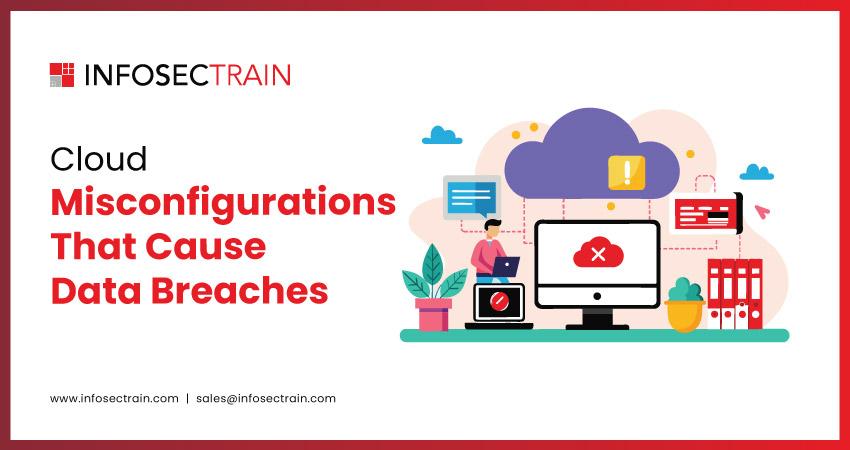
Real-World Examples: Learning from Past Misconfiguration Breaches
Misconfigurations have led to some of the most notorious data breaches in recent years, serving as a stark reminder of the importance of proper cloud posture management. One prominent incident that highlights this issue is the Capital One data breach in 2019. An improperly configured AWS firewall allowed a former employee to access sensitive personal information of over 100 million customers. This breach not only compromised customers’ data but also cost the company millions in remediation and legal fees, demonstrating the far-reaching consequences of misconfigurations.
Another eye-opening example is the Uber breach, where a misconfigured Amazon S3 bucket exposed sensitive data of 57 million users and drivers. The incident revealed that basic security measures, such as ensuring proper access controls, can be overlooked. Uber’s situation underscores a critical lesson: even the giants of the tech industry can fall victim to the consequences of neglecting cloud security configurations.
To further illustrate the impact of misconfigurations, let’s consider the following table that summarizes key incidents:
| Company | Year | Impact | Cost |
|---|---|---|---|
| Capital One | 2019 | 100 million records compromised | $80 million |
| Uber | 2016 | 57 million users affected | $148 million |
| Yahoo | 2013 | 3 billion accounts exposed | $350 million |
These cases highlight not only the scale of the breaches but also the financial repercussions that follow. Companies are now realizing that investing in comprehensive cloud posture management tools is crucial to avoid similar pitfalls. By implementing solutions that automate security checks, teams can identify and rectify misconfigurations before they lead to costly breaches.
Learning from these examples, organizations should focus on establishing a culture of security awareness and continuous monitoring. This includes conducting regular audits, utilizing advanced threat detection technologies, and providing staff with training on the importance of secure configurations. By prioritizing these aspects, businesses can significantly reduce their risk of a breach stemming from misconfigurations.

Empowering Your Team: Training and Awareness for Cloud Security
In today’s rapidly evolving digital landscape, the effectiveness of your cloud security heavily relies on the strength of your team. Misconfigurations, often considered the Achilles’ heel of cloud environments, can lead to devastating data breaches. It’s imperative that organizations prioritize training and awareness programs that empower employees to take an active role in maintaining a secure cloud environment.
Training your team begins with understanding the common pitfalls associated with cloud misconfigurations. These can include:
- Improper access controls
- Default security settings
- Neglecting regular updates and patches
- Overly permissive permissions
By identifying these issues, teams can better position themselves to prevent potential security breaches. Regular training sessions that cover these topics not only enhance knowledge but also foster a culture of vigilance and accountability.
The role of Cloud Posture Management (CPM) cannot be overstated in this educational journey. CPM tools help in identifying and rectifying misconfigurations before they can be exploited. Consider incorporating the following best practices into your training regimen:
- Conducting regular security assessments with CPM tools
- Implementing a feedback loop for continuous improvement
- Simulating real-world attack scenarios to test team response
To further enhance your training initiatives, consider leveraging the effectiveness of a structured awareness program. Here’s a simple framework that can be adapted:
| Training Module | Duration | Format |
|---|---|---|
| Introduction to Cloud Security | 1 Hour | Webinar |
| Common Misconfigurations | 2 Hours | Workshop |
| Using Cloud Posture Management Tools | 3 Hours | Hands-on Lab |
| Incident Response Strategies | 1.5 Hours | Roundtable |
By investing in a thorough training and awareness program, organizations not only equip their teams with the necessary skills but also cultivate a proactive security mindset. Remember, in cloud security, the best defense is a well-informed team that understands both the technology and the threats it faces.

Future-Proofing Your Cloud Strategy Against Misconfigurations
As organizations continue to migrate to the cloud, the risk landscape evolves. Misconfigurations—common yet often overlooked—have become a significant vulnerability. They represent a gap in security that can be easily exploited by threat actors if not properly managed. To stay ahead of these risks, businesses must prioritize cloud posture management (CPM) as a core component of their cloud strategy.
Implementing an effective CPM framework requires a multifaceted approach. Key strategies include:
- Automated Compliance Checks: Regularly scheduled audits can identify misconfigurations before they become a liability. Automation reduces human error and accelerates the response time to potential threats.
- Continuous Monitoring: Real-time visibility into cloud resources allows teams to detect unusual activities or configuration drift, ensuring that security policies remain enforced.
- Clear Governance Policies: Establishing and maintaining a clear set of governance policies can guide teams on best practices and set standards for configuration management.
To effectively future-proof your cloud strategy, organizations should also invest in training and awareness programs for their teams. Ensuring that every team member understands the importance of cloud security and the consequences of misconfigurations can significantly mitigate risks. A well-informed team is the first line of defense against potential breaches.
Here’s a simple breakdown to highlight the impact of misconfiguration versus standard security practices:
| Aspect | Misconfiguration Impact | Best Practice Outcome |
|---|---|---|
| Data Exposure | High risk of data breaches | Data integrity and security |
| Compliance Issues | Fines and legal repercussions | Regulatory compliance |
| Operational Downtime | Service disruptions | Stable service availability |
the responsibility of safeguarding cloud environments lies in the hands of organizations. By adopting a proactive approach with cloud posture management, teams can not only mitigate the risks associated with misconfigurations but also enhance their overall security posture. Investing in tools and practices that focus on prevention will pave the way for a more resilient future in the cloud.
Frequently Asked Questions (FAQ)
Q&A: Misconfigurations Are the New Data Breach – How Cloud Posture Management Helps
Q1: What are misconfigurations, and why are they a growing concern in cloud environments?
A1: Great question! Misconfigurations refer to incorrect settings or configurations in cloud services that can leave your data vulnerable. As more businesses migrate to the cloud, the complexity of managing these settings increases. A simple oversight—like not setting the right access controls—can open the floodgates to data breaches. In fact, many security experts argue that misconfigurations are now one of the leading causes of data leaks.
Q2: How serious is the threat posed by misconfigurations?
A2: The seriousness can’t be overstated! Recent studies indicate that a significant percentage of breaches stem from misconfigurations. These incidents can lead to unauthorized access to sensitive data, financial losses, and damaging reputational hits for organizations. Imagine your private data exposed to the public due to a simple oversight—it’s a nightmare scenario, and unfortunately, it’s becoming all too common.
Q3: What role does Cloud Posture Management (CPM) play in preventing these issues?
A3: Cloud Posture Management is a game-changer! CPM tools continuously monitor your cloud environment and help to identify and remediate misconfigurations in real-time. They provide visibility into your cloud resources, ensuring that everything is set up according to best practices. By automating this process, CPM reduces the human error factor and gives you peace of mind, knowing that your cloud configurations are secure.
Q4: Can you give me an example of how CPM has helped organizations?
A4: Absolutely! Take, for instance, a company that discovered through CPM tools that their S3 buckets were publicly accessible due to misconfigured settings. This oversight could have led to massive data leaks! With CPM, they were able to quickly identify the issue, rectify the settings, and implement ongoing monitoring to ensure it didn’t happen again. This proactive approach not only protected their data but also saved them from potential regulatory fines and loss of customer trust.
Q5: What should organizations keep in mind when implementing Cloud Posture Management?
A5: First and foremost, choose a CPM solution that integrates seamlessly with your existing cloud services. It should be user-friendly and provide clear, actionable insights. Additionally, make sure to involve your entire team in understanding how to utilize these tools effectively. Cloud security is a shared responsibility, and everyone from IT to management should be on the same page. Regular training and updates on best practices will also go a long way in minimizing risks.
Q6: Is investing in CPM worth it?
A6: Absolutely! Think of it as an investment in your organization’s future security. The cost of a data breach can be astronomical—not just in terms of fines, but also in lost business and damage to your reputation. CPM not only helps protect against these potential costs but also ensures that you are compliant with regulations, ultimately giving you a competitive edge in the marketplace.
Q7: What’s the takeaway for companies navigating cloud security?
A7: The key takeaway is that misconfigurations are a real and present danger in cloud environments, but they’re also preventable. By implementing robust Cloud Posture Management practices, you can safeguard your data, maintain compliance, and foster trust with your clients. Don’t wait for a breach to happen—act now to secure your cloud infrastructure!
By addressing the risks of misconfigurations and the advantages of Cloud Posture Management, we can foster a more secure digital landscape for all organizations. Let’s prioritize our data safety together!
Wrapping Up
As we wrap up our exploration of the pressing issue of misconfigurations in the cloud, it’s clear that the landscape of data security is evolving. The reality is that misconfigurations are no longer just a benign oversight; they have become a significant entry point for breaches that can compromise sensitive data and tarnish reputations. However, the good news is that with the right tools and strategies, like Cloud Posture Management, we can turn the tide.
By proactively identifying and rectifying these vulnerabilities, businesses not only safeguard their data but also foster a culture of security awareness within their teams. Embracing a robust Cloud Posture Management solution empowers organizations to maintain compliance, enhance visibility, and ultimately, fortify their defenses against an ever-increasing array of cyber threats.
So, as you consider your own approach to cloud security, remember that prevention is always better than cure. Don’t wait for a misconfiguration to become a costly breach. Invest in the right tools today and take the proactive steps needed to protect your organization’s future. After all, in this digital age, security isn’t just an option—it’s a necessity. Let’s make misconfigurations a thing of the past and pave the way for a safer, more secure cloud environment. Your data deserves nothing less!

